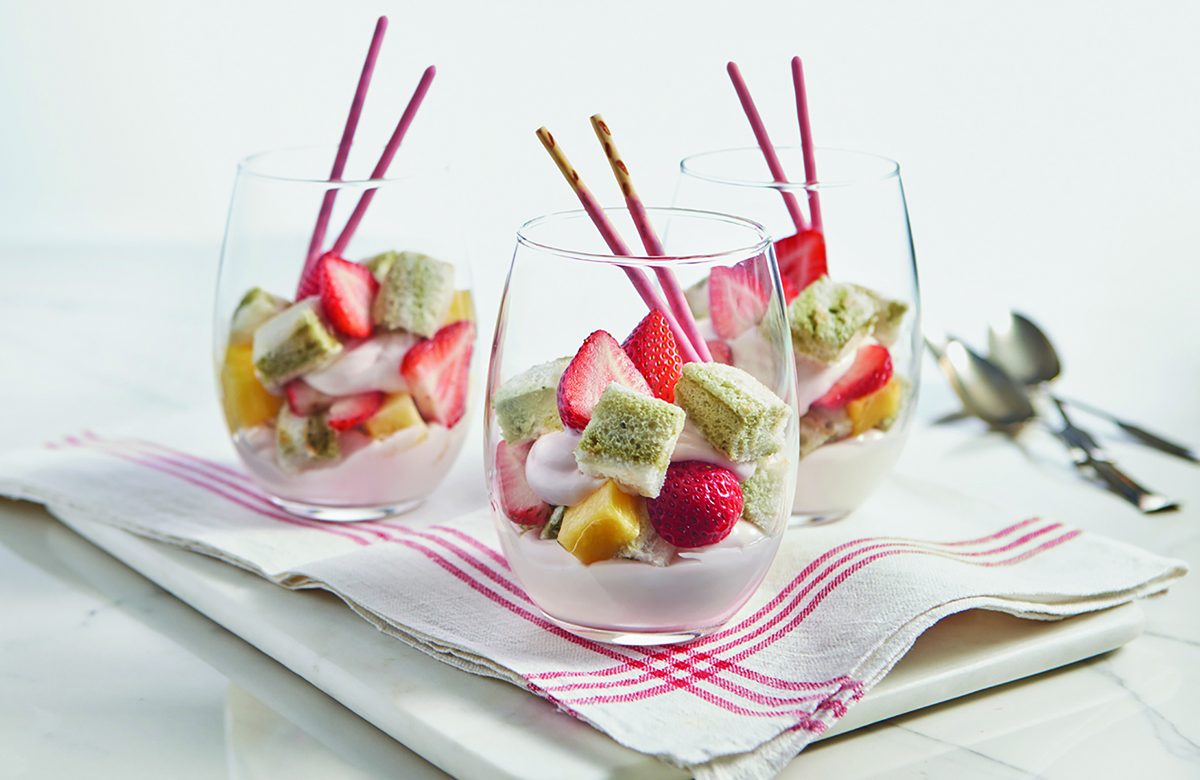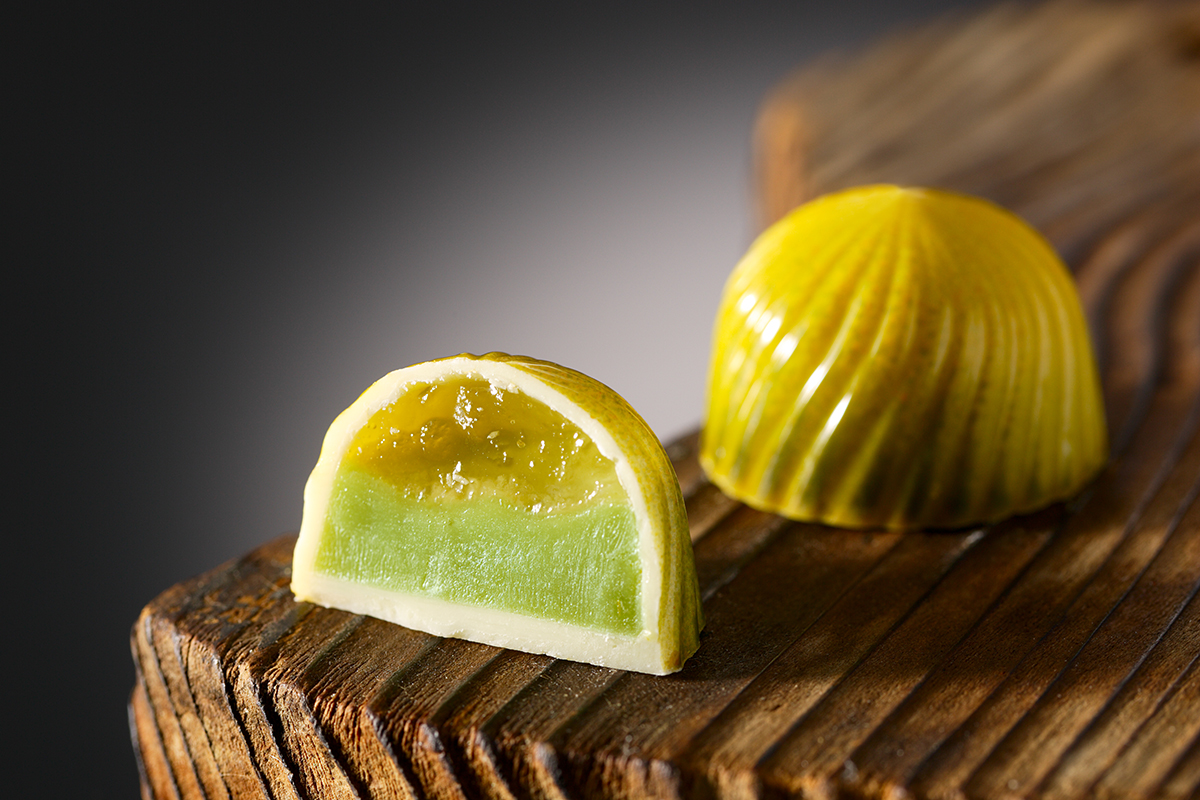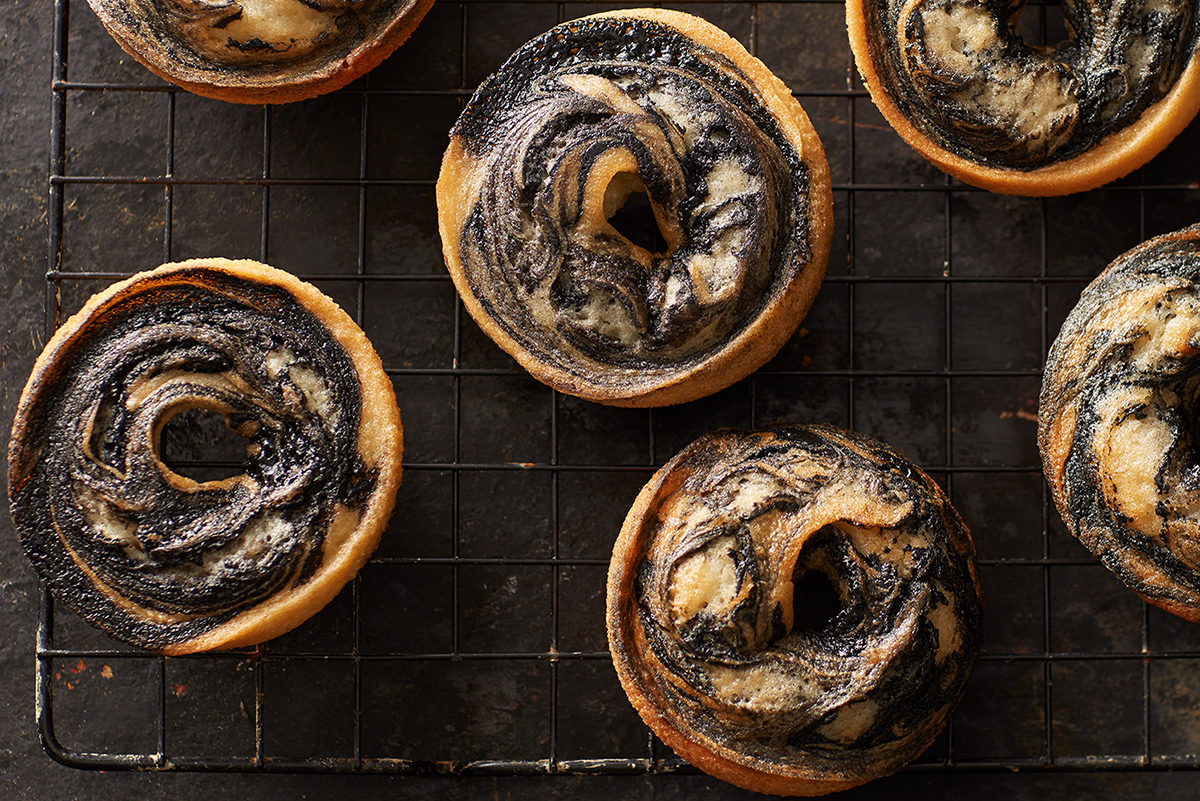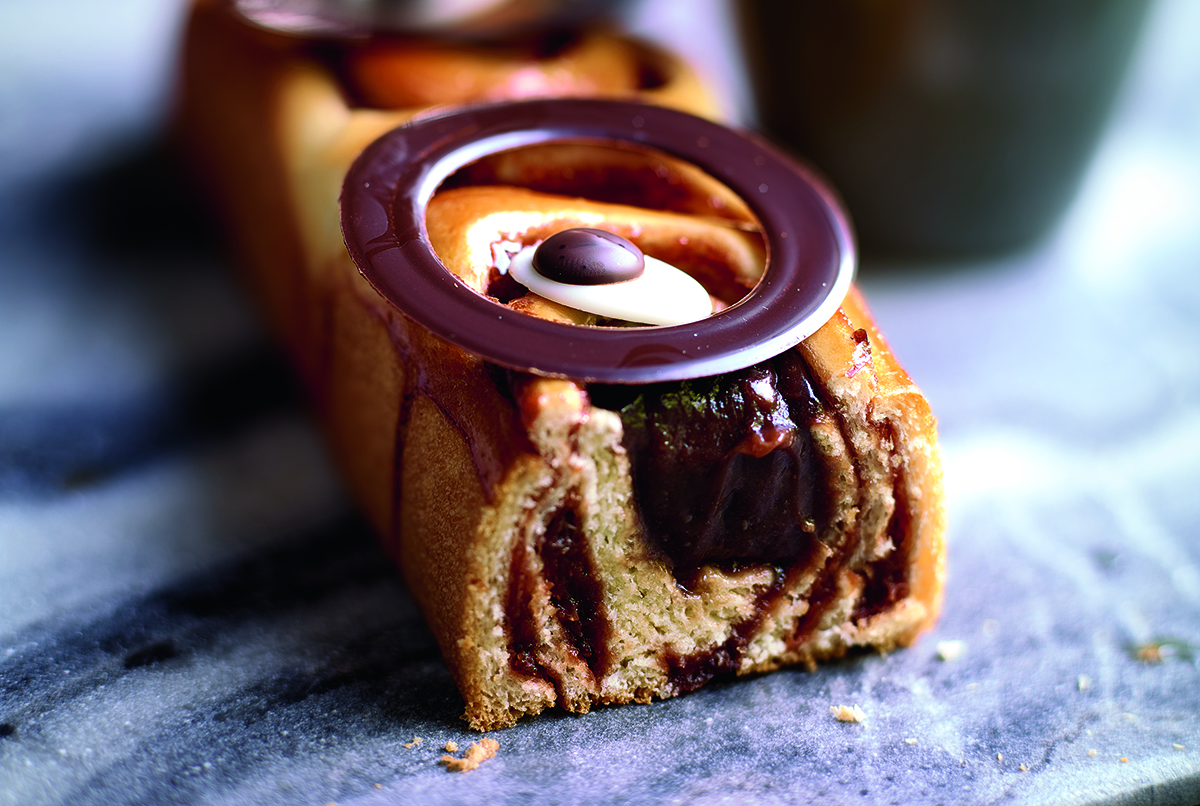Trends are ever-changing; quite literally, it’s in their definition. What’s down at the moment may suddenly rise in popularity, and likewise, what’s hot right now may soon cool off. It’s important to stay on top of trends, especially in the food industry. Customers have an expectation of satisfaction. If that can’t be met, they’ll soon go elsewhere.
Dessert and pastry experts constantly monitor developments on menus, looking for what flavors are trending. At companies such as General Mills, Puratos, and Archer Daniels Midland (ADM), this knowledge is essential to remaining innovative and staying on top of the food industry. At culinary schools such as Pennsylvania College of Technology and Johnson & Wales University, instructors need to be able to pass this knowledge on to the next generation of pastry chefs and bakers.
What’s clear among these specialists of the sweet and savory is that a select few categories are dominating the discussion. Convenience, taste, and health may all seem like simple concepts, but it’s the variance within them that has people excited. For instance, while bite-sized treats have been popular for years, items such as mini cinnamon rolls and muffins are taking off at bakeries. According to Technomic, half of consumers prefer baked goods and desserts in individual portions rather than medium or large-sized portions.
International influences are making their way to our menus, and quickly. Datassential’s 2019 Dessert’s Sweet Spot Keynote Report found that two in five consumers are interested in more globally-inspired flavors when it comes to desserts. Exotic tastes provide unique twists on some of the staple baked goods. Asia and Eastern Europe are having an especially strong effect on menus in recent years.
Finally, the health factor is strong with consumers. The trend toward natural continues, as adults are seeking out sweet baked goods for themselves and their children that are made with natural sweeteners and organic ingredients. These clean label foods feature ingredients that consumers recognize and think of as wholesome. There is also a noticeable push to create products that consumers already know and love, while using alternative ingredients that fit within specific dietary or nutritional preferences.
To help make sense of the evolving dessert and pastry world, we sought the advice of some of the industry experts who track what’s important with today’s consumers.
Consumer desire for clean label

Today’s consumers expect more meaningful nutrition from the foods they eat. They also look for ingredients they recognize. A holistic approach to health and wellness, including a greater focus on how diet affects aspects of physical, mental and emotional wellbeing, is fueling the growing interest in these offerings.
ADM’s OutsideVoice℠ proprietary research indicates that 60% of consumers say recognizable ingredients influence their purchase decision, and 66% say they are looking for labels with the shortest ingredient list. When bakers are selecting ingredients for dessert and pastry products, the desire to achieve a clean label affects nearly every aspect of the formulation, from natural sweetening and sugar-reduction solutions to naturally derived colors and flavors.
People are more aware of what they’re buying and the ingredients they’re consuming, but they still want foods that are appetizing. This is especially important when it comes to desserts and pastries.
“(Consumers) want everything from gluten-free to vegan to reduced sugar, but they don’t want to compromise on taste and quality in order to get it,” says Ted Osorio, corporate chef with General Mills Foodservice. “Freshness plays an important role too. Fresh-baked items and offering freshly-made desserts equates to quality and great taste in the eyes of the consumer. Therefore, it’s important that operations promote freshness as well as showcase their use of natural or quality ingredients.”
“Consumers no longer view baked goods and confections simply as indulgences, but as opportunities to have an enjoyable eating experience that also provides functional nutrition benefits,” says Paula Labine, Marketing Director at ADM. “One example of this is rising demand for baked goods formulated with plant proteins like ancient grains, seeds, nuts, and pulses. Consumers want these indulgences to satisfy their cravings while also providing a boost of nutritionally-beneficial ingredients that allow them to uphold their wellness values.”

Jaime Schick, assistant professor in the Johnson & Wales University Baking & Pastry Arts department, says that this rising health-consciousness is manifesting itself in increased use of whole grains and milk alternatives.
“There continues to be a move towards including more whole grains, beyond a health-conscious standpoint. Whole grains create a more interesting flavor and texture in desserts. Spelt, amaranth, rye add a more robust flavor and texture in cakes and pastries,” she says. “The influx of milk alternatives to the market and consumer preferences continues to influence the options for non-dairy based ingredients in desserts. From nut milks such as cashew to other milks such as coconut or oat, the choices are expanding.”
The experts we talked to all agreed that the clean label trend is here to stay. Paula Labine says that increased expectations are playing a huge role in that.
“The definition is expanding to include expectations of transparency around the entire product lifecycle –production, processing, sourcing, and business practices,” she says. “We expect to see increased demand for products with fewer ingredients on labels, as well as “close to nature’ ingredients such as vanilla or citrus extracts.”
Plant-based popularity is growing, says Charles R. Niedermyer II, Baking and Pastry Arts Instructor for Pennsylvania College of Technology, and retail bakeries need to make adjustments to keep up. At the same time, you can’t lose sight of what makes your bakery unique.
“Clean label packaged goods are becoming the expectation of discerning customers. Regulars are asking questions, and searching ingredient lists on their phones, prior to making a purchase. Challenges can include increased ingredient costs, necessary R&D time, as well as some possible trade-offs with classic products when substituting for traditional ingredients,” he says. “The key is knowing your customers, the products, and services that are most important to them, and staying true to your niche. We can’t be all things, to all customers, that walk in our doors.”
Importing flavor

Desserts and pastries are not only being influenced by health factors, but also global taste factors. Consumers are more interconnected than ever, which has contributed to demand for exotic flavors and ingredients and globally-inspired food experiences. There are plenty of opportunities within the dessert and pastry categories to meet this demand.
Ingredients typically found in other countries but virtually unheard-of in the U.S. market will become much more common.
“In 2020, we foresee greater acceptance and growth of tropical and exotic citrus flavors including mango, passionfruit, yuzu, calamansi, mandarin, clementine, and bergamot,” says Paula Labine. “Botanicals and florals such as hibiscus, basil, lavender, basil, thyme, and rose are emerging as well—part of a wider acceptance, especially when paired with mainstream flavors consumers already know and love.”
This provides bakers and pastry chefs with the opportunity to play with formats and excite customers with the unexpected.
“There will always be traditional favorites and flavors that consumers expect, but we are seeing more unique twists on some of the staple baked goods leveraging global or more exotic flavors,” says Chef Ted Osorio. “It’s fun to offer consumers a baked item they are familiar with but give them the opportunity to experience it in a new and unexpected flavor or color. There’s no better way to do that than by giving it a global twist!”
A prime example of a way in which General Mills Foodservice is experimenting with this idea is black sesame butter donuts and black sesame cookies. It provides a moody vibe in these sweet treats and creates a beautiful marbling effect. The flavor has impact and it is visually striking.
Based on its Taste Tomorrow research, Puratos says that 56% of North American consumers enjoy unusual and exotic tastes from other parts of the world (Millennials are more open to unusual and exotic tastes at 65%).
Flavors from Asia are especially popular at the moment. Based on research conducted by Tastepoint by IFF, the world is focused on Japan for the next edition of the Summer Olympic Games, resulting in renewed interest in the region and its flavors. Dishes and ingredients from the country are gaining in popularity both in restaurants and retail products.
Ingredients such as shiso (an herb in the mint family often used to provide a refreshing garnish to dishes in Japanese cooking) and yuzu (a sour mandarin citrus hybrid long revered in Japan for its distinct flavor and culinary versatility) are being incorporated into dishes, setting the table for more Asian-inspired flavors in the coming year.

Exotic citrus flavors, spicy flavor profiles, and even botanical flavors such as rosemary, hibiscus or lavender are all being used to inspire baked good innovation. Some fun examples of this courtesy of General Mills Foodservice include Prickly Pear Lime Croissant Muffins, Kaya Croissant Muffins, and fruit sandwiches inspired by the Japanese tradition of Luxury Fruits. These edible works of art showcase how fruit and global influences combine to create some very unique dessert items.
Japan is not the only country influencing American cuisines. According to IFF’s Tastepoint flavor trend predictions for 2020, the Middle Eastern sweet good known as halva will inspire flavor innovations. This dense tahini and sugar-based dessert, which also has roots in Eastern Europe and pockets of Asia and Africa, is crumbly and satisfyingly rich.
Classic halva flavors include pistachio, lemon and chocolate swirl, making it prime for usage in items such as snack bars, sweet spreads, and frozen desserts.
To maximize the value of exotic flavors on your menu, Charles R. Niedermyer II suggests creating talking points for these items.
“Highlight these ingredients with natural color presentations, variations in texture, and a great story,” he says. “Customers want to hear about your farm direct fruits, estate chocolates, and miller-to-baker flours, for example, all adding to the value of the purchase.”
Cross-cultural flavors with surprising combinations and twists can give consumers a low-risk way to be adventurous. Chef Ted Osorio says that “global mash-ups” such as French and Scandinavian, Mexican and Southeast Asia, and regional cuisines like Native American are imminently popular.
Menu mash-ups continue to trend and provide you with a canvas in which to showcase your creativity. They also give you the opportunity to offer memorable baked goods that will keep customers coming back.




